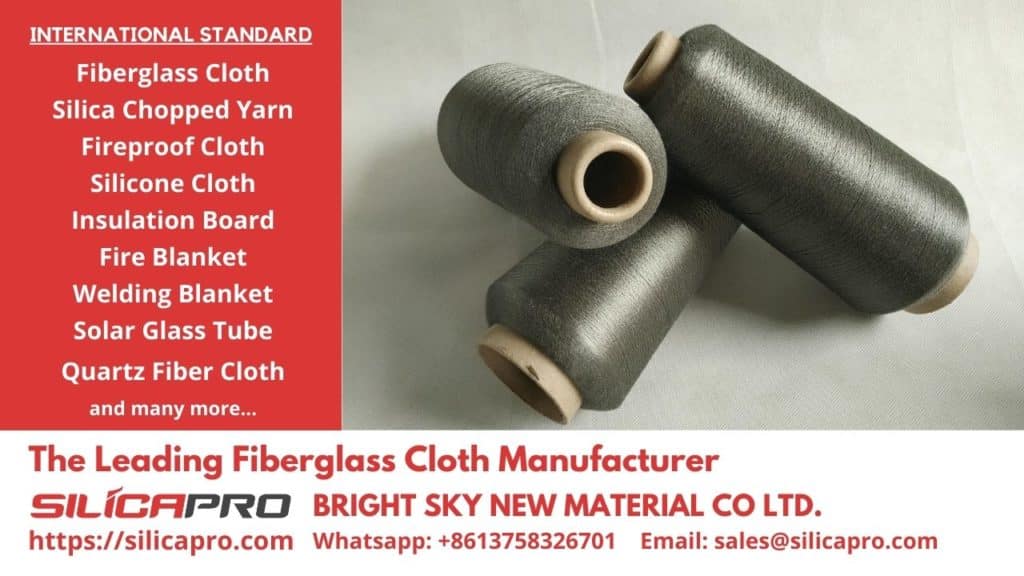
The fiberglass yarn production process involves several important stages. A goal is to turn glass fiber into yarn that is strong, durable, of high quality, and meets the specified requirements.
This process may vary depending on the technology and equipment used by a particular manufacturer, as well as the final application of the yarn. However, for the goal to be achieved, each step in this process requires precision and accuracy. Also technical expertise and strict quality control.
How is the Fiberglass Yarn Production Process Carried Out?
In this article, let’s review how fiberglass yarn is produced, and what steps are involved in producing high-quality, strong yarn from fiberglass.
Collection and Selection of Raw Materials
The process begins with collecting and selecting high quality glass fibers according to the required specifications. These fibers will be the basic material for making fiberglass yarn. Paying attention to quality is very important so that the resulting fiberglass yarn meets the desired quality requirements and standards in various industrial applications.
Glass fibers can come from a variety of sources and have a variety of sizes and characteristics. Glass fiber is usually made from raw materials such as silica or various types of molten glass. Later the raw material will be pulled or heated to form fine fibers.
Mixing of Additional Raw Materials
The selected glass fibers are then mixed with additional raw materials. Usually by using certain chemicals such as adhesives or resins. The goal is to help bind the fibers together and form threads.
These chemicals also help improve the special mechanical properties of the fiber, such as heat resistance, corrosion resistance or a certain strength. In addition, in some cases, fiberglass threads can also be reinforced with additional raw materials such as metal wire to provide better strength in the final thread.
Raw Material Processing
The fiber mixture and additional raw materials are then machine-processed to form a consistent and strong yarn. In this stage, there are at least 3 steps that need to be passed, namely as follows.
Fiber Preparation
A mixture of glass fiber and chemicals is arranged and arranged in such a way as to form a uniform and quality yarn. This process generally involves special arrangement and direction of the fibers using special equipment.
Heat Treatment
Fibers that have been arranged to resemble threads are then processed with a certain heat. The goal is to activate the chemical and form a strong bond between the glass fibers. The heat treatment process usually involves an oven or other heating equipment machine.
Withdrawal and Extension
After heating, the yarn produced cannot be used immediately. There is still a drawing and elongation process to adjust the diameter and other mechanical properties. This step is performed using a special machine to help create yarn with consistent strength.
Drying and Cooling
After going through the processing stage, the fiberglass yarn production processed will go through the drying and cooling stages. At this stage, the yarn will be clamped and dried. This is necessary to remove moisture that may still be trapped in the yarn fibers.
In addition, drying can also cool the thread so that it is less stiff and ready for use in the next application. More importantly, good drying and cooling are essential to prevent unwanted deformation or damage to the thread.
Quality Testing
Before being sold or used in the final product, fiberglass yarns go through a series of quality testing stages. The aim is to ensure that the thread meets the specified standards and meets the requirements of the final application.
These tests typically involve testing for tensile strength or maximum load, resistance to heat or high temperatures, and resistance to corrosion. Then there are also durability tests, texture and flexibility tests, chemical resistance, and other physical and mechanical properties.
Roll and Storage
Yarn that has passed quality testing will be spun and stored so that it is not damaged and maintains its quality. The thread is wound on a spool or bobbin with the help of a machine to ensure that the thread is wound neatly and regularly without kinks.
During winding, the yarn tension is controlled to avoid over-stretching the fibres. After that, the yarn will be safely labeled and packaged according to the type and specifications. Finally, the yarn is stored in a place with the right temperature and humidity.
Marketing and Distribution
After that, the finished fiberglass threads will be sold and distributed to various industries. The industry especially considers the superior properties of glass fiber, such as strength, heat resistance and corrosion resistance. For example, the automotive industry, aviation, construction, energy, electronics, marine, and many more.
